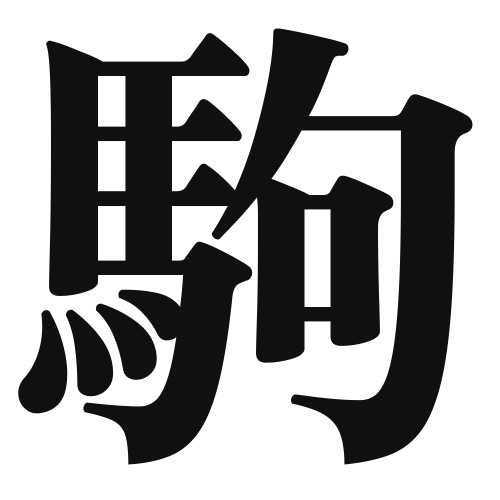1. Overview of Meaning
The kanji “駒” (koma) primarily means “horse” or “steed,” specifically referring to a young horse or a horse used for riding. It can also denote a piece in chess or shogi, representing a pawn or a minor piece in these games.
2. Formation and Radical
Formation of the Kanji: The kanji “駒” is a phonetic-ideographic character (形声文字). It combines the radical for “horse” (馬) with a phonetic component that suggests its pronunciation.
Radical: The radical of “駒” is 馬 (uma), which means “horse.” This radical is commonly found in kanji related to horses and equestrian activities.
3. Examples of Usage
Common Words and Phrases: Some frequently used words that include “駒” are 駒馬 (komauma – young horse) and 駒札 (komasatsu – a piece in shogi).
Example Sentences in Daily Conversation:
- 彼は新しい駒を買った。 (Kare wa atarashii koma o katta.) – He bought a new horse.
- 将棋の駒を動かすのが好きです。 (Shogi no koma o ugokasu no ga suki desu.) – I enjoy moving the pieces in shogi.
4. Synonyms and Antonyms
Similar Kanji: A similar kanji is 馬 (uma), which also means “horse” but does not specify age or type. “駒” is more specific to young or riding horses.
Antonyms: An antonym could be “牛” (ushi), which means “cow,” representing a different type of livestock.
5. Cultural and Historical Background
Relation to Japanese Culture: Horses have played a significant role in Japanese history, especially in agriculture and warfare. The kanji “駒” reflects this cultural importance.
Proverbs and Idioms: One common saying is “馬の耳に念仏” (uma no mimi ni nenbutsu), which means “preaching to the horse’s ear,” similar to the English phrase “casting pearls before swine,” indicating that advice is wasted on those who do not understand it.
